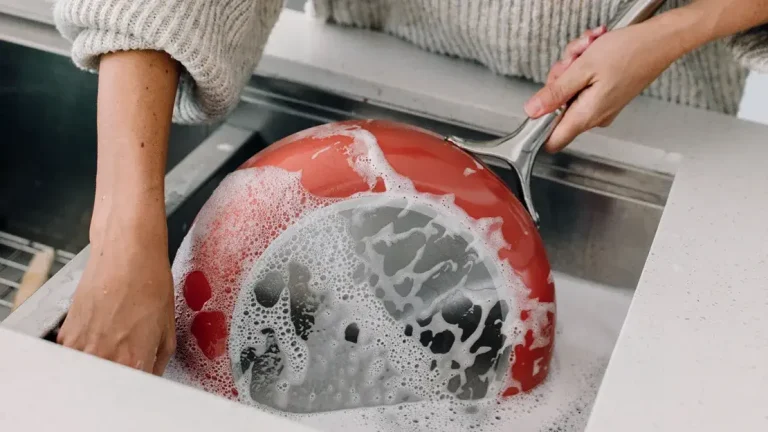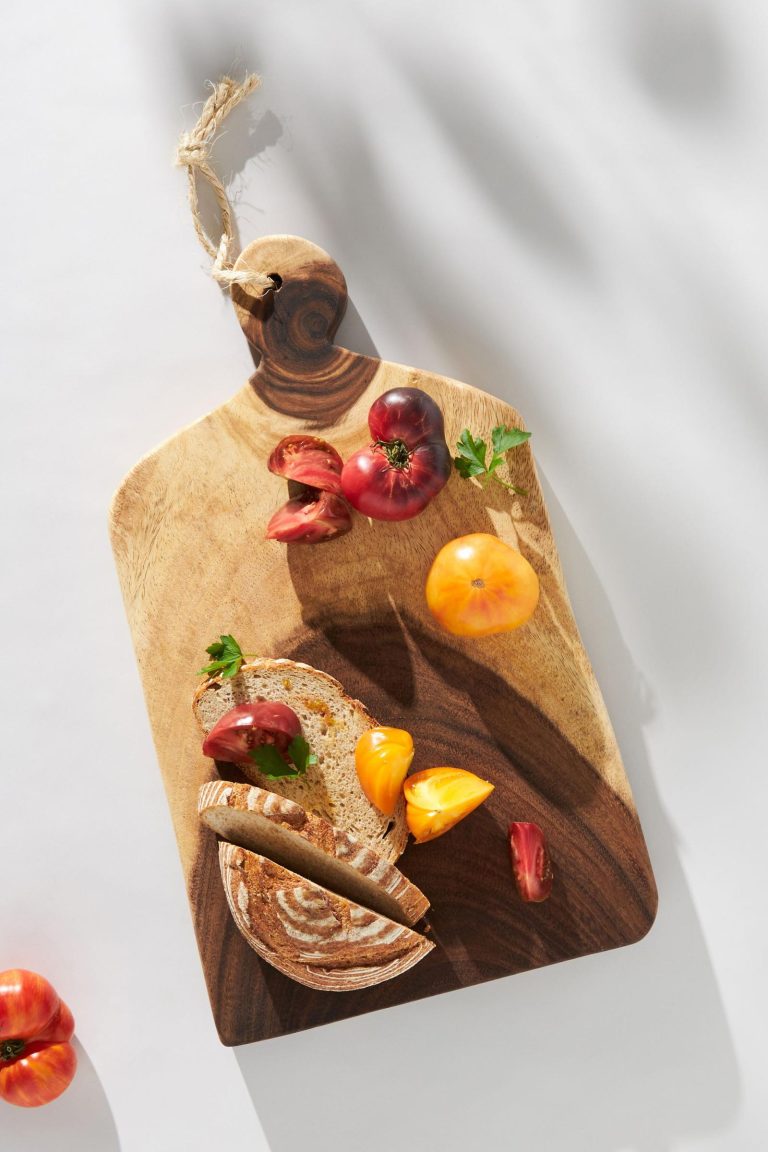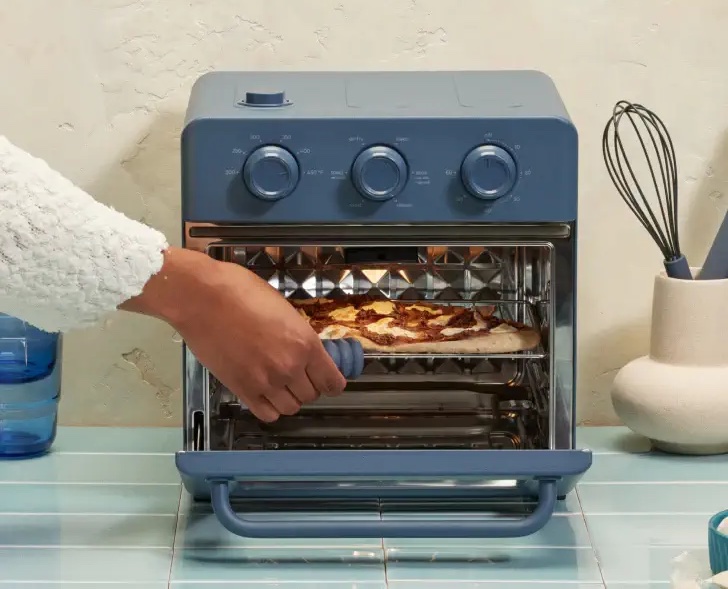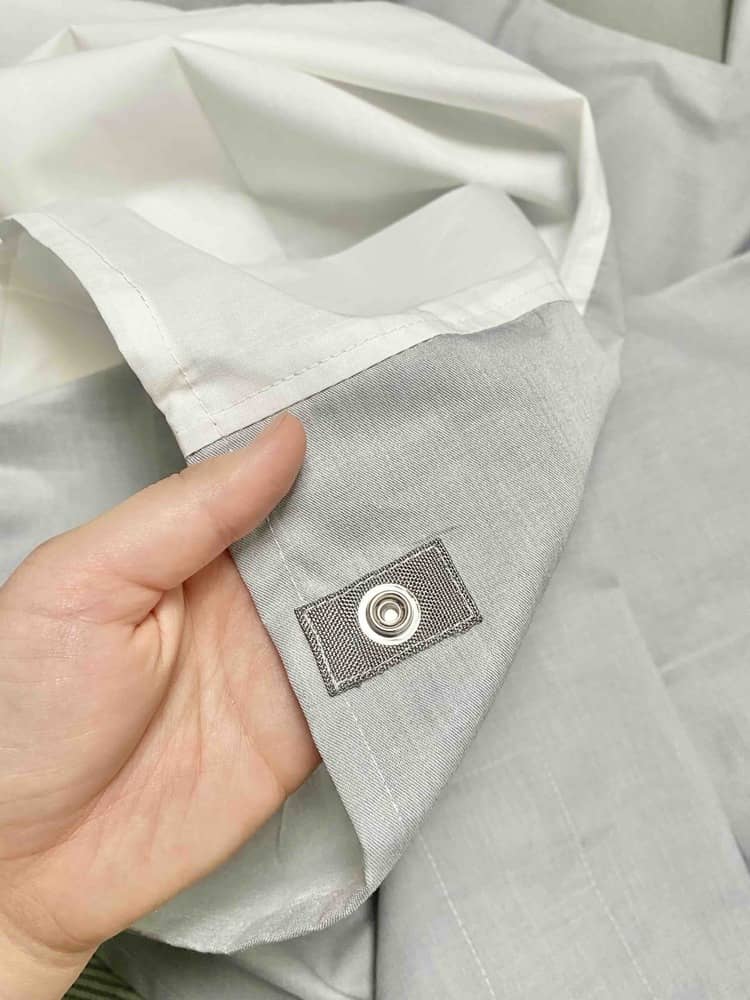The Ultimate Guide to a Non Toxic Kitchen In 2024
You can buy the cleanest, organic food but have you ever thought about how many toxic chemicals come in contact with your food while you cook?
I’m talking about chemicals that are just as bad (or even worse) than the pesticides they ruthlessly spray onto our produce.
It’s estimated that we now have over 90,000 man-made chemicals in our environment – and there’s no way to truly know how these chemicals are impacting our health.
It’s up to us to protect ourselves and keep our kitchens free from zombie chemicals.
A Non Toxic Kitchen: It’s Worth the Effort
According to the EWG, it’s estimated that 99% of Americans have PFAS (a dangerous “forever chemical”) in their blood.
Even in small doses, PFAS causes cancer, birth defects, and other serious illnesses.
However, making a few swaps in your kitchen can dramatically cut down the concentration of toxic chemicals like PFAS in your blood and lymphatic system drastically.
Plus, your food will just taste better.
Here are 25 quick swaps you can make right away to keep your kitchen sacred.
1) Get Rid of Teflon and Nonstick Cookware
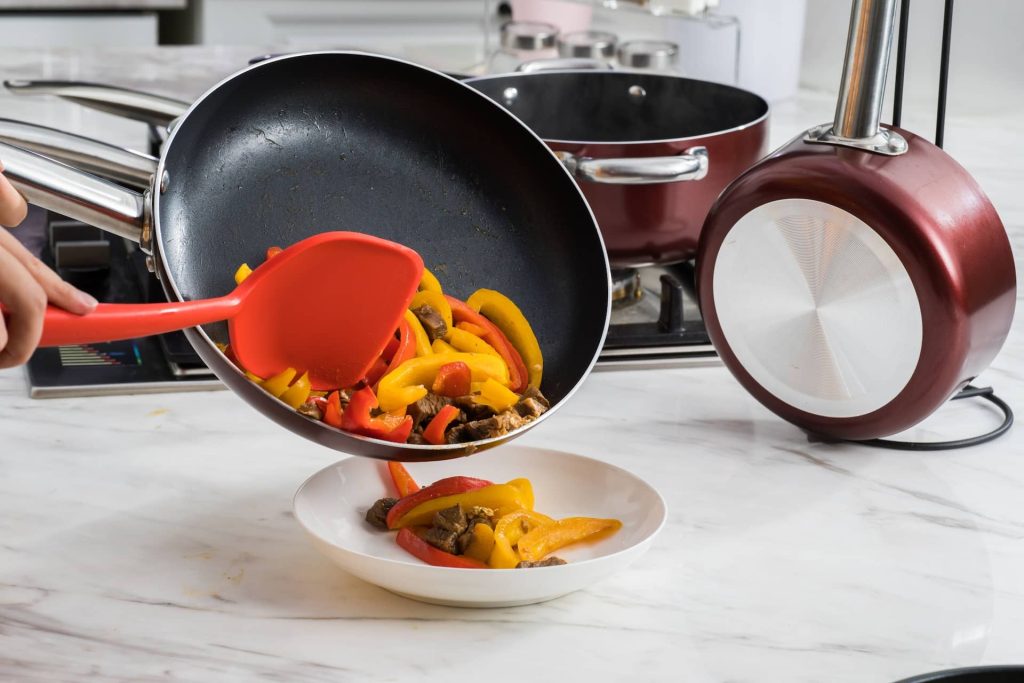
Avoid Teflon at all costs!
Teflon pans and other nonstick cookware contain a chemical called PFOA, which even in small doses, causes cancer, birth defects, and other serious illnesses.
When you use nonstick cookware, these chemicals reach high temperatures, seep into your food, and emit toxic fumes.
AKA: Teflon pans will kill you and ruin your health.
I use ceramic cookware instead, which is naturally nonstick, will last me years, won’t leach any heavy metals, and doesn’t emit any toxic fumes or particles. Plus, they look beautiful on my stovetop. They require gentler care than regular pans, but they are so much easier to clean.
Maybe it’s just me, but my food also just tastes better when cooked in a ceramic pan.
2) Say NO to Parchment Paper & Silicone Baking Sheets
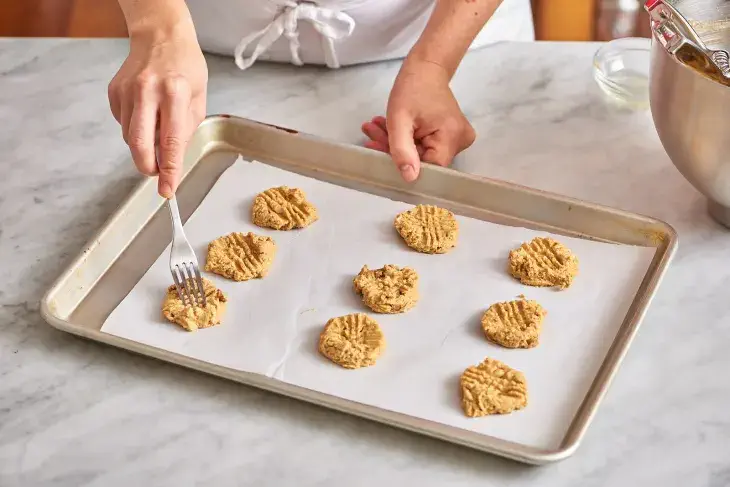
I scoured the internet for parchment paper that was made with non toxic materials, but shockingly, I couldn’t find any.
Even the “safe” brands use a silicone coating, which leaches into food and emits toxic fumes at high temperatures. Silicone at high temperatures is anything but safe.
Why is parchment paper so toxic?
- Parchment paper is often coated with Quilon, a chemical containing Chromium (a heavy metal) that emits extremely toxic fumes when heated and leaves toxic trace elements behind.
- Bleached parchment paper is manufactured with chlorine and dioxins, which may cause many reproductive and developmental diseases.
- Parchment paper is coated in silicone, which emits toxic fumes and leaches chemicals into your food. Silicone-infused cookies, anyone?
As for silicone baking sheets: The fact is, there haven’t been any actual studies testing silicone’s reaction to food when heated. Just because they have a high melting point doesn’t mean that they can’t break down and leach harmful chemicals over time.
Instead of silicone baking sheets or parchment paper, I recommend ceramic baking sheets.
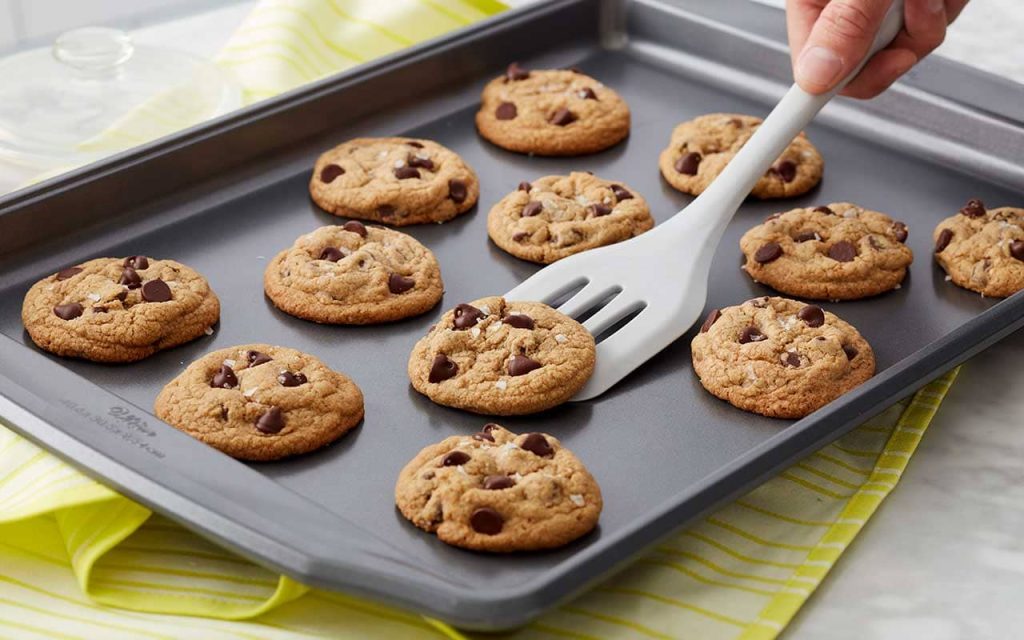
They’re non toxic and completely non-reactive. No chemical additives means there’s nothing to leach into your food when heated.
They are infinitely reusable and easy to clean. Plus, they are relatively inexpensive.
I personally use ceramic baking sheets and love them. I don’t miss parchment paper or silicone baking liners at all.
3) Use Glass Containers
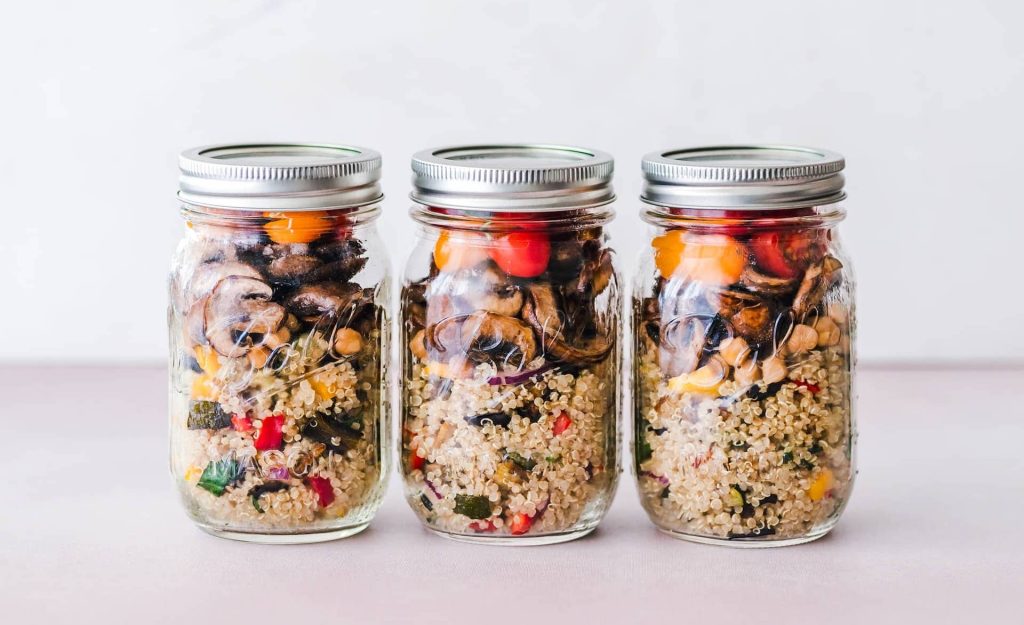
Glass is the safest material you can use for food storage. Not only is it non-toxic, but it also won’t stain or have a weird smell over time like plastic containers do.
Plastic containers leach harmful chemicals into food, especially when it’s heated. Plus, many plastics contain BPA, a hazardous chemical that has been linked to endocrine disruption and other diseases.
Glass is also just easier on the eyes.
4) Swap Your Plastic Cutting Boards

Plastic cutting boards are one of the most common cooking utensils, but they aren’t your best friend. While plastic is light and easy to clean, it’s easy to scratch and breaks down over time (microplastics in your salad, anyone?).
Plus, plastics contain BPA and other toxic chemicals that will leach into your food – especially if you’re cutting up acidic foods like tomatoes.
Swapping out your plastic cutting boards for glass or untreated wooden or bamboo ones is a great way to keep your kitchen nontoxic.
Not only are they safer, but they also look nicer too.
Check out our guide where we’ve spent hours researching the best boards for you: 6 Best Nontoxic Cutting Boards In 2024
5) Choose a Non-Toxic Air Fryer

Air fryers are all the rage right now, but not all of them are created equal.
Many air fryers have coatings that contain PFOA (perfluorooctanoic acid) and PTFE (polytetrafluoroethylene). These chemicals have been linked to hormone disruption and infertility. Yay!
When shopping for an air fryer, make sure you look for one with a ceramic or stainless steel interior. These materials are much safer and more durable.
Thankfully, I’ve done all the research for you and created a list. See my top picks here: The Best Non Toxic Air Fryers [PFAS & BPA free], Reviewed.
6) Filter Your Water

Did you know that tap water is full of chlorine, pesticides, heavy metals, and even traces of pharmaceutical drugs? Sadly, it’s true.
Whether you filter your water for drinking, cooking, or washing your produce, investing in a good water filter for your kitchen can drastically reduce the amount of these toxic and chemical contaminants that you consume.
7) Filter Fumes With an Air Filter

Air filters are designed to remove cooking odors, dust, dander, pollen, mold, and other common allergens from the air that you may inhale or ingest if these particles land in your food.
Not only that but cooking on a gas stove can produce dangerous fumes that are extremely toxic to the central nervous system. To help reduce the amount of air pollution in your kitchen, invest in a good air filter. Look for a filter labeled with True HEPA for best results.
8) Choose Non Toxic Dinnerware
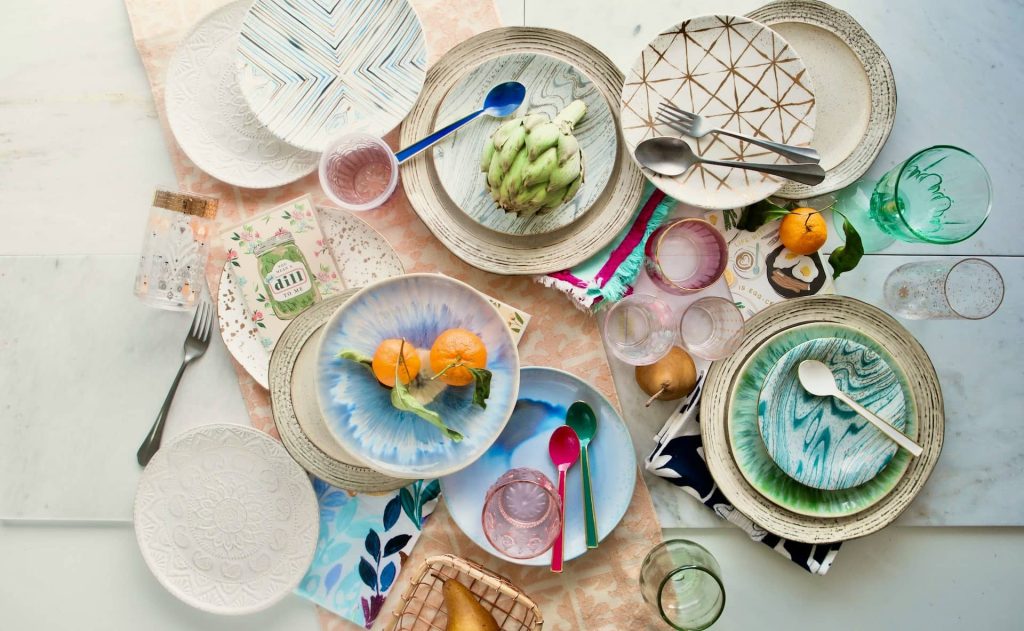
Many conventional dishes are laced with BPA, lead, melamine, cadmium, and phthalates. When choosing plates and bowls, look for items made from natural materials like non-treated bamboo, glass, or ceramic. These materials will not leach toxins into your food and are often much more durable than plastic or other chemical-laden materials.
9) Clean Up With Natural Alternatives

Even the most non-toxic kitchens need to be cleaned and sanitized.
Harsh chemicals like bleach, perfumes, and synthetic dyes in conventional kitchen cleaning products can cause respiratory problems, skin irritations, and hormone imbalances.
Look for products that are made with all-natural ingredients like vinegar, baking soda, and essential oils. These non-toxic cleaners can be used effectively on a variety of surfaces without toxic fumes or chemicals.
10) Get Rid of Your Microwave
Using a microwave to heat food is incredibly convenient, but it comes at a cost. Microwaves release radiation when in use, which speeds up the aging process rapidly and causes faster deterioration of cell tissue. Gray hair and saggy skin? No thanks.
Avoid microwaves altogether and instead opt for natural methods of cooking like an air fryer or stovetop. You’ll get more flavor from cooked food this way too.
11) Use Glass Baking Dishes
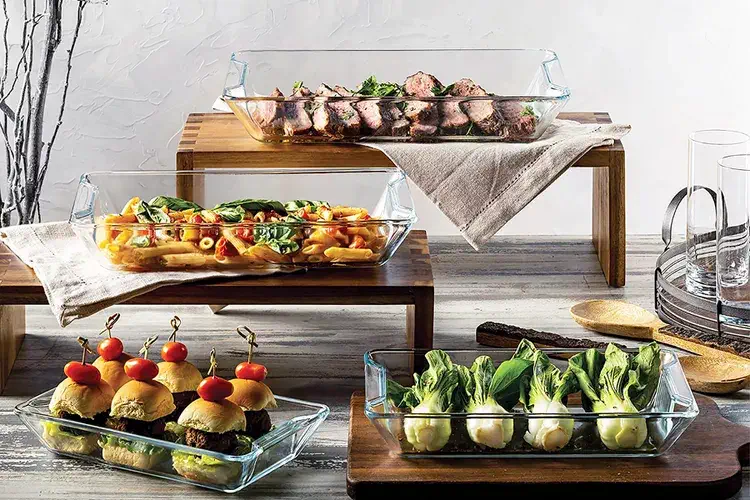
You should also be mindful of the dishes you use when baking. Non-stick coatings can contain PFOA and other chemicals that could leach into your food. To avoid these toxins, switch to glass baking dishes which emit zero toxins into your food. Plus, they’re much easier to clean!
12) Electric Griddles and Grills
We’ve already talked about Teflon on the list, but in case you haven’t heard, Teflon kills. Opt for griddles and grills with ceramic surfaces instead of Teflon or other non-stick coatings that can deadly chemicals and fumes when heated.
Ceramic is a natural and non-toxic alternative that can withstand high heat without any risk of toxins entering your food. Plus, it’s easier to clean and lasts longer than traditional non-stick surfaces.
13) Ditch the Plastic Wrap

Beeswax and other natural wraps are a great alternative to plastic wrap for storing food. Not only do they keep items fresh, but they also don’t release any toxic chemicals like BPA (linked to obesity, heart problems, and cancer) into your food. Plus, unlike plastic wrap, you can reuse them over and over again!
14) Use a Glass Kettle
Plastic kettles release toxins and chemicals such as BPA, a known endocrine disrupter linked to breast and ovarian cancer.
Opt for a glass kettle instead, which is completely free from toxins. Not only is it safer for your health, but you’ll also be able to watch the water in the pot as it boils which is cool.
15) Stainless Steel Toaster
Many toasters and toaster ovens are made with plastic components and contain non-stick coatings made from PFAS. These chemicals and their fumes have been linked to health issues like cancer, thyroid disease, and infertility.
Using a stainless steel option will eliminate any potential exposure to toxins that can leach into your food when heated. It’s more durable and will last longer too.
16) Bamboo or Untreated Wooden Utensils

Using plastic utensils can be dangerous as they may contain BPA, a chemical that has been linked to all sorts of cancers and infertility issues. Instead of plastic, opt for stainless steel utensils, bamboo utensils, or untreated wood kitchen utensils. Not only are these materials safe and non toxic, but they look more chic too!
17) Cook with Healthy Oils
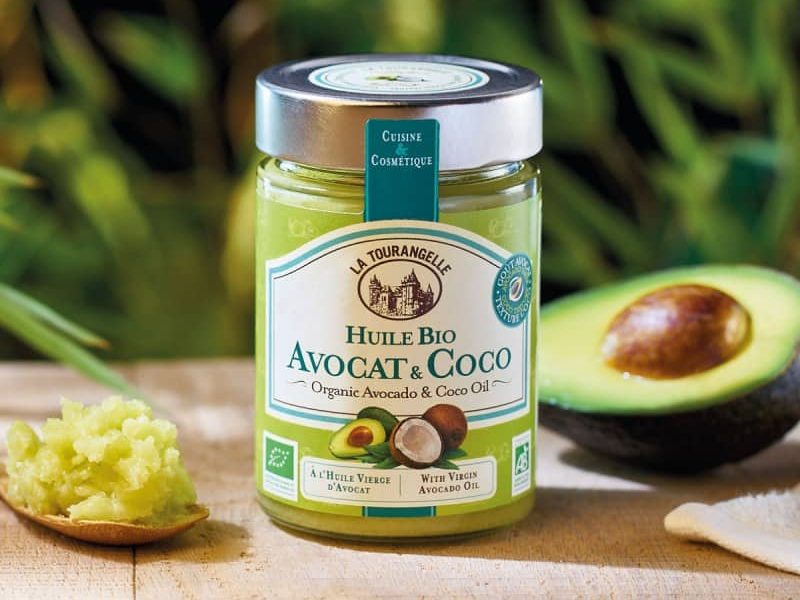
When it comes to cooking, healthy oils should be your go-to choice.
Heavily processed GMO oils like canola oil and seed oils should be avoided at all costs.
Instead, opt for healthier options like organic extra virgin olive oil, coconut oil, and avocado oil. These oils are much easier on the body and won’t inflame your cells like processed oils do.
18) Use Non Toxic Oven Mitts
Oven mitts can seem harmless, but they can be a real hazard to your health. If they’re made from synthetic materials such as polyester or nylon, you risk exposing yourself to harmful fumes and possible burns if they melt after coming in contact with a hot surface.
Oven mitts are also often doused in fire retardant chemicals which are highly toxic and can be absorbed through your skin.
Opt for a flame retardant-free oven mitt made from organic cotton, bamboo, or hemp instead, which is naturally non-toxic and heat-resistant. Make sure they are free of synthetic dyes too.
19) Stainless Steel Ice Cube Trays
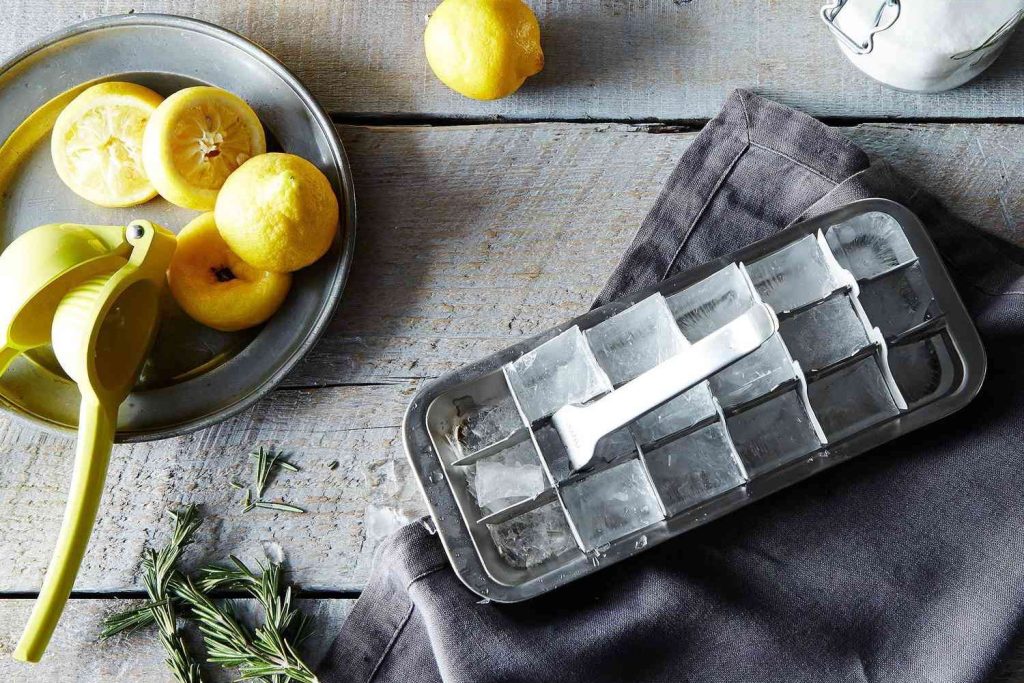
If you want to make sure your ice cubes are free of toxins, swap your plastic ones for stainless steel ice cube trays. Unlike plastic trays that can leach chemicals like BPA or phthalates into your drinks, stainless steel will not release any harmful toxins into your food. Plus, they won’t crack like plastic ice cube trays do!
20) Stop Drinking Plastics with a Glass Tea Infuser
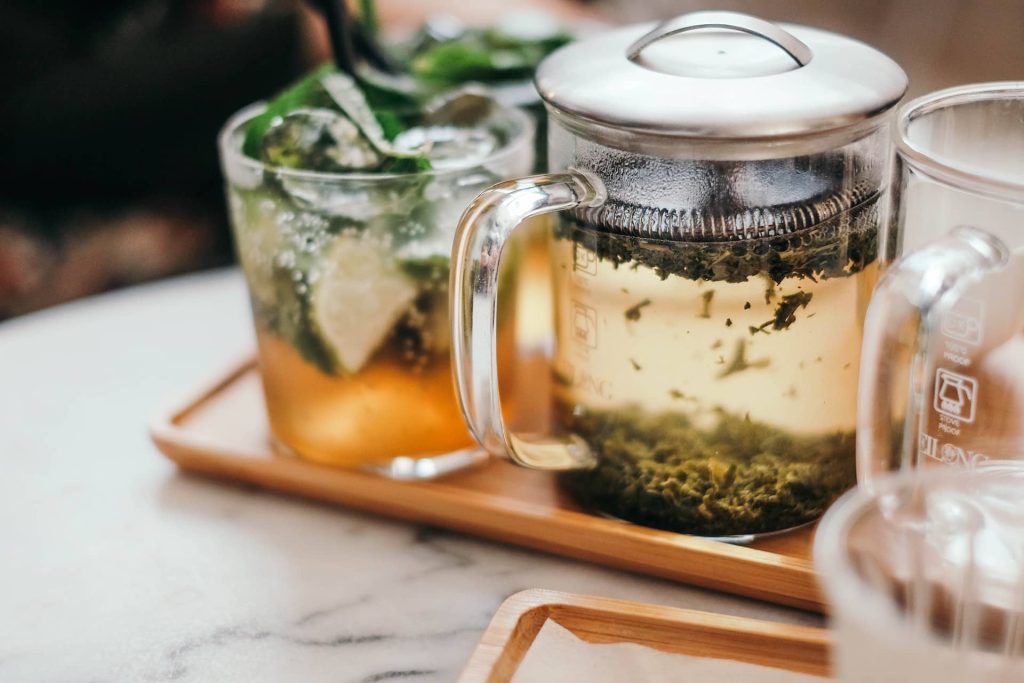
Did you know tea bags are often made from bleached paper and plastic? When the tea bag is steeped, these materials will leach endocrine disruptors and neurotoxins into your cup.
A glass tea infuser is a great way to brew herbal teas without worrying about any toxins getting into your drink. Plus, you can use the infuser infinitely, making it much more eco-friendly than disposable tea bags.
21) Avoid Canned Foods
Canned foods are often lined with a plastic-like coating that contains BPA. When heated, this BPA can leach into your food, leading to a host of health issues such as hormone disruption, weight gain, and reproductive problems.
Whenever possible, opt for fresh or frozen foods instead. Not only do they taste better, but you’ll avoid all the potentially toxic chemicals found in canned goods.
22) Cook with High-Quality Salt
Table salt is often bleached and filled with additives like anti-caking agents. Instead, use high-quality sea salt or Himalayan pink salt for your cooking needs. Not only are these salts free of toxins, but they also contain essential minerals that your body needs for proper functioning.
23) Choose Natural Fibers

Curtains, rug pads, chair cushions, towels, and other materials used in the kitchen can contain harmful chemicals such as formaldehyde, flame retardants, and stain repellents. These chemicals can off-gas into your home, leading to respiratory issues and other health problems.
To avoid this, choose non toxic natural fiber options such as organic linen or hemp instead. They may be slightly more expensive, but they are much safer for your health in the long run.
24) Non-Toxic Dish Soap
Did you know that dish soap can be filled with chemicals that can be harmful to your health? Ingredients like synthetic fragrances and triclosan have been linked to hormone disruption and other health issues.
To avoid these toxins, opt for a non toxic dish soap made with skin-friendly plant-based ingredients and essential oils. Not only will it keep your dishes clean without the use of harsh chemicals, but it’s also better for the environment.
25) Opt for Natural Pest Control
Got an ant or fruit fly problem in your kitchen?
Instead of using chemical pesticides, try non toxic alternatives such as vinegar, essential oils, or diatomaceous earth. These options are not only healthier for you, but they are just as effective as their chemical alternatives. Plus, they won’t leave poisons in the air, on your surfaces, or your food.
What Are The Best Materials for Non Toxic Cooking Utensils?
When it comes to cooking utensils, there are plenty of clean, non toxic options available. Some of these include:
- Food Grade Stainless Steel: This is a durable and safe option for cooking utensils. It’s easy to clean and doesn’t leach any harmful chemicals into your food.
- Ceramic: Made from natural clay materials, ceramic utensils are free from toxins like PFOA and PTFE that can be found in non-stick cookware. They are also heat-resistant and long-lasting.
- Bamboo: This renewable resource is a great alternative to plastic utensils. It’s lightweight, durable, and doesn’t contain any harmful chemicals. Make sure to choose untreated bamboo cooking utensils that are NOT “dishwasher safe” (those are chemically treated).
- Glass: Similar to ceramic, glass does not contain any toxic materials and is safe for cooking. It’s also easy to clean and long-lasting.
How Can A Non Toxic Kitchen Benefit Me?
You are what you eat – and the tools you use in your kitchen play a huge role in your health too.
Unfortunately, not even the cleanest ingredients in the world are chemical-free if you cook with utensils coated in mystery chemicals – toxic chemicals and fumes that leech into your food and cause heavy metal contamination, aging, weight gain, and even chronic health issues such as endocrine disruption, infertility, and cancer(!!!).
Not to mention – we’re facing a crisis of chronic illnesses, and many are a “mystery” that scientists just can’t seem to figure out.
Wake up!
By switching to non toxic cooking utensils, you can reduce your exposure to these chemicals and create a safer environment for yourself and your family.
Conclusion
Creating a non toxic kitchen may seem daunting, but it may be the best investment you make for your health.
By replacing chemical-coated, illness-causing cookware and utensils with non toxic ones, you’re directly reducing your day-to-day (or meal-to-meal) exposure to harmful chemicals.
Overall, you’ll just feel better knowing that your kitchen utensils aren’t causing you a slow, painful death.
And the best part?
The swaps I’ve suggested are not only toxin free (allowing you to live long and stay sexy) but they’ll last you a lifetime. In the long term, it’s probably easier on your wallet (even more, it’ll save you from insanely expensive medical bills in the future).
Frequently Asked Questions:
How do I make my kitchen non-toxic?
To make your kitchen non-toxic, start by replacing any cookware or utensils that are labeled as “non stick” or made with toxic materials such as aluminum, nylon, or plastic with non toxic alternatives. Look for materials like stainless steel, glass, ceramic, or bamboo to use for cooking and food storage.
What is the most non-toxic cookware?
There are many non-toxic cookware options available made from materials such as stainless steel, glass, and ceramic. However, different brands offer varying degrees of safety and non-toxicity, so it’s important to do your research and choose a reputable brand with certifications ensuring their products are free from harmful chemicals.
What are the least toxic kitchen utensils?
Some of the least toxic kitchen utensils include those made of untreated bamboo, wood, and stainless steel. It’s important to avoid plastic utensils as they can contain harmful chemicals such as BPA, a chemical that can cause weight gain, diabetes, cancer, and other serious health issues.
What is the healthiest cookware to cook with?
The healthiest cookware options are made of glass, stainless steel, and ceramic. These materials do not leach chemicals or heavy metals into your food and are safe for everyday use. Avoid non-stick and Teflon cookware as they contain toxic chemicals that, even in small doses, cause cancer, birth defects, and other serious illnesses.


